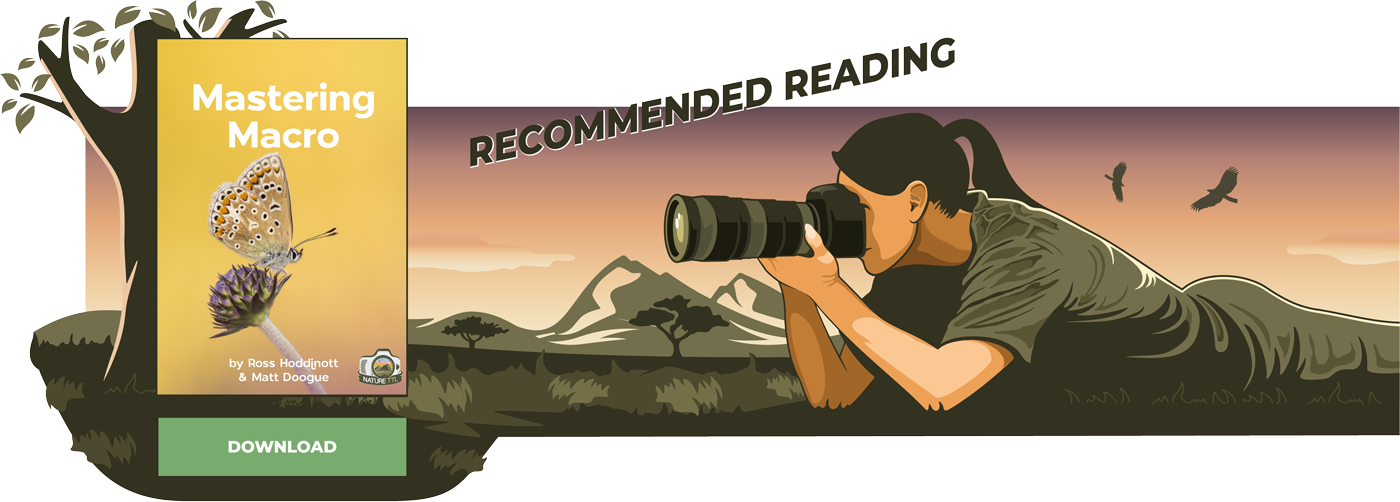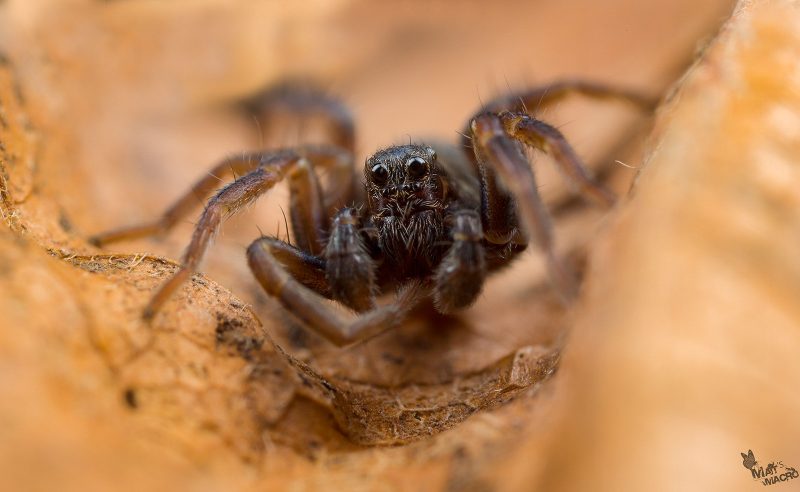How to Compose a Macro Photo

Composition is one of the most important aspects of photography. Every time we lift up the camera, we look through the viewfinder and try to capture a scene that’s both interesting and pleasing to the eye. With genres such as landscape photography, you’re given lots of opportunity and time to compose your shot. However, this becomes a little more challenging when it’s a macro image we are taking.
In macro photography, your subject is usually moving and if you’re out at midday photographing arthropods then they’re usually moving at quite some pace; this makes it extra challenging.


In this beginner’s guide to composing a macro photo, I’ve put together some great hints and tips to get you started in capturing beautifully composed macro images.

What is composition?
A dictionary will define composition as “the nature of something’s ingredients or constituents; the way in which a whole or mixture is made up.”
In a way, this sums it up pretty well in terms of a photograph. Everything you see before you when composing a photograph is a mix of subjects that ultimately form your shot. In a landscape photograph, this can be large rocks, trees, or something else of interest. We can compose our shot in various ways by moving ourselves around, using different focal lengths, or choosing to zoom in or out of the scene.
With macro photography, this becomes a tad more difficult. We’re usually at a high magnification, which forces everything other than the subject out of the frame. However, this doesn’t mean the shot has to lack composition.
Use the rule of thirds
The rule of thirds – we’ve all read about it; it’s one of the most basic and common rules used when composing a shot. It’s where most of us start, and is a great “rule.” However, rules are “made to be broken” and so the rule of thirds should act more as a guide than a strict rule.
In the image above, you will see the photograph has been divided up into nine equal rectangles. The general rule is to place something of interest at one of these points where the lines intersect. Any natural leading lines are also placed near these points. This is more pleasing and appealing to our eye.
Focal points
The use of a focal point in your composition is vital in macro photography. In a landscape shot, for example, there could be various focal points without it looking cluttered.
In macro, I feel one or two is all you need. Too many and the viewer’s eye is distracted, and so for that reason I mostly choose one.
Subject isolation
Try and isolate your subject within the frame in an interesting and appealing composition. This can easily be done by having a nice clean backdrop. You want your subject to be the main focal point of your image, and you want the viewer’s eye to be instantly drawn to it. Sometimes foliage or other macro subjects can ‘photo bomb’ your scene.
This can easily be solved by shooting with a really shallow depth of field to throw out (make out of focus) the backdrop or imposing macro subjects. However, shooting with a shallow depth of field may require you to focus stack your shot.
Use that negative space
One great way of ensuring that our viewer’s eye is “please” is to add some negative space into your image. In the shot below, you can see that I’ve added in some more space on the right and moved the subject to the left side of the frame.
Using negative space leaves the viewer with nothing else other than your chosen subject to concentrate on.
Learn more: How to Take Amazing Spider Macro Photos
Leading lines
Using leading lines in your image provides the viewer with a natural path for the eye to follow, guiding them through your image. The best part is that they can be found pretty much anywhere.
When we view art and photos (or even in film), our eyes are drawn to any lines we see; we naturally want to follow them and see where they lead. They don’t have to be straight lines, either. They can curve, bend, and twist.
They can be manmade or natural and once you start to spot them you will notice them everywhere. In this shot, I’ve made use of the natural curve of the leaf, drawing the viewer in towards the spider. This also adds a sense of scale to the photo.
Learn more: Composition Tips – Leading Lines and Vanishing Points
Cropping to aid composition of macro photos
One easy way to get your eye used to composing your shots is to do it via a crop in post-production. This usually works best with flighty subjects.
By pulling back slightly and allowing more of the scene to be captured initially, you can then crop out and place your subject where you want in the frame. Just keep in mind that heavy cropping will reduce the quality of your final image, as you’re chopping out precious megapixels!
Research your subject
So, you’ve read everything above and put it into practice, yet that spider keeps running out of your perfectly composed frame, or that bee keeps moving out of your shot.
It’s frustrating, I know. This is where learning about your subject comes into play. I’ve spent years watching and photographing various species and this has allowed me to predict their behaviour with more accuracy.
Try to predict a spider’s path, or if a bee is going to remain stationary or not. This will allow you to get the shots that you want.
Take spiders, for example. I try to get ahead of them and allow them to walk into my frame. I will compose my shot and wait, and sometimes it works like in the image below. Sometimes it doesn’t.
Break the rules
Rules are meant to be broken, right? Sometimes the subject itself provides enough compositional interest that you can shoot without having to think about composition too much. The natural curve of this millipede’s defence position provides some perfect leading lines.
Composition transcends all genres of photography, and with some genres it’s easier to find. Macro photography is a difficult subject in its own right, so don’t be disheartened if you’re struggling to compose your macro shots – it takes time and practice.
Sometimes the subjects just don’t play ball, but this is the joy of working with wildlife. Keep at it. I can’t begin to tell you how many thousands of images of mine have never seen the light of day because I got it wrong. We all do, and remember that what you see on websites, magazines, and social media is the end product of hours of work, research and blurry photos!
More on macro photography:











